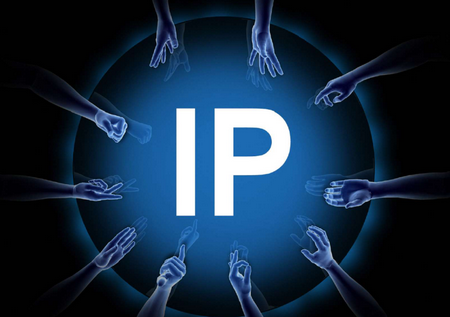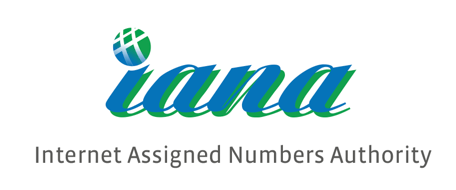We are facing a shortage of IP addresses. This sentence might sound obnoxious and unbelievable at first because there are around 4.3 billion IP addresses but once you look at it closely you will understand what we mean by we are running out of IP Addresses. If we tell this thing to laymen who do not know about IP addresses, the first question on their mind is What is an IP address? followed by How can we have a shortage of IP addresses?
What are IP Addresses and Why do we need them?
An IP address is a one-of-a-kind identifier or unique address for a device on the internet or a local network. This address follows Internet Protocol which is a collection of rules that governs the format of data transferred over the internet or a local network.
IP addresses are a must for any device if they want to interact or for sharing data on the internet. The internet requires a method to distinguish between various computers, mobiles, and webpages on the internet and IP addresses facilitate this and are a very important component for us to use the internet.
IP Addresses are use for managing the link between devices that send and receive data through a network
When the internet first officially launched on January 1, 1983, everything changed for humans in the way interact and spend our time. No one ever thought the internet was going to be this big and I can surely say that nobody ever imagine we are going to have a shortage of IP addresses but as the internet became ever used, the available number of IPv4 addresses became insufficient and this was bound happen someday but nobody expected this to so soon and now we are having a shortage of IP addresses.

While the concept of IP address was first coined and the number of IP addresses that were fixed did not have any idea, how IP addresses were going to be used in the future. They only thought of a small number of computers but nowadays they are used in your smartphones, refrigerator, washing machines, fans, and many more. Everything is connected to the internet and to interact you need IP addresses.
Why did we have a Shortage of IP Addresses?
Two types of IP addresses currently exist and they are IPv4 and IPv6 addresses. Let me be clear here when I say we are facing a shortage of IP addresses then I am strictly talking about the IPv4 addresses. There are around 4.3 billion IPv4 addresses in the world and if you are thinking about how we came to this number then you need to understand that IPv4 addresses are 32 bits long so you can calculate the exact number of IPv4 addresses by multiplying 2 for 32 times.
IPv4 addresses are made of four octets and every combination of IP addresses that are currently in the world can be formed by using these octets. But the burning question is how we came to this situation? Let’s analyze this question and try to figure out why we are facing a shortage of IP addresses?
IANA ( International Assigned Numbers Authority) is only authorized to assign IP addresses globally and they are solely responsible for assigning IPs to various Internet Service Providers. When they first introduce IP addresses, they divided them into five classes.
| Class | IP address range | Subnet Mask |
| Class A | 1.0.0.0. to 126.255.255.255 | 255.0.0.0 |
| Class B | 128.0.0.0 to 191.255.255.255 | 255.255.0.0 |
| Class C | 192.0.0.0 to 223.255.255.255 | 255.255.255.0 |
| Class D | 224.0.0.0 to 239.255.255.255 | |
| Class E | 240.0.0.0 to 254.255.255.255 |
IANA divided IP addresses into these classes depending on the number of hosts needed by an organization. Class A IP address can support a large number of hosts roundly about 16.8 million which is outrageous right! IANA made them such because it thought big organizations such as Microsoft, Apple, and many governmental offices might need them. They located this large network address to companies such as General Electrical Company, IBM, Xerox Corporation AT&T Bell Laboratories, etc.

Now, you can see the problem clearly, there is no way that these companies need that many networks, and due to this various unused IP addresses are even available for common use. You might be familiar with class C addresses because your home IP address is made of this class. This only allows you to have 254 networks which would have been better than providing more than 16 million IP addresses to one giant company.
The other problem is that Class D and Class E are for not public use as they are for experimenting and broadcasting which decreases the available number of IP addresses. What this classful IP addressing has done is the risk of running out of address space and they did not incentivize effective address space allocation
One of the main reasons for the depletion of IP addresses is that everything that we develop nowadays runs on IPv4 addresses. Any device that connects to an Internet network requires an IP address, and IPv4 addresses are still used by practically all businesses. The dependency on IPv4 addresses has led us to this state of shortage of IP addresses.
Mobile phones have become viable Internet hosts since IPv4 has established the de facto standard for networked digital communication and the cost of putting significant computer power into hand-held devices has decreased. According to the research done by Statista, there are around 6.648 billion smartphones. Does that ring a bell inside your head? Yes, it does right. As we understand that we have only 4.3 billion IP addresses but there are 2.3 billion more smartphones. Here we are not even counting our personal computers.
Compared to devices that were connected to the internet two decades ago, the depletion of IP addresses did not even cross the mind of people but as the Internet became more and more used, more devices started to connect to it and in the last two decades million of the household got connected with internet, this increased the consumption of IP address thus leading to a shortage of IP addresses.
What are the solutions to mitigate this problem?
With an ever-increasing need for IP Addresses as the number of devices and users connected to the internet is increasing rapidly. There have been so many discussions and different solutions are developed so that we do not have a shortage of IP Addresses and some of them are as follows.
- IPv6 Addresses: It was developed in 1998 AD and it is made of 48 bits and hexadecimal numbers are used in this whereas binary is used in IPv4 Addresses. This allows IPv6 addresses to have 340 trillion trillion trillion combinations compared to 4.3 billion for IPv4 addresses.
- The concept of using network address translation (NAT), which allows a private network to utilize a single public IP address while allowing private addresses in the private network.
- Use of Classless IP addresses
- Nowadays regional Internet registrations have stricter control over the distribution of addresses to local Internet registers.
Read about: Neema Academy Launches Junior Megamind, a Futuristic Digital Learning Platform on STEAM Courses.
Key Points To Take Away:
- IP addresses are like addresses of a person so when you know the address of a specific person you can send your parcel.
- IP addresses are of two types i.e. IPv4 addresses and IPv6 addresses.
- Currently, most devices use IPv4 addresses.
- We are running out of IPv4 addresses, not IPv6 addresses, there are only a few million IP addresses left in the world while we have not even explored IPv6 addresses.
- IANA assigns the IP addresses globally.
- Dependence on IPv4 increased after the boom of the internet.
- NAT, IPv6, and classless IP addresses are some of the solutions for the depletion of IPv4 addresses.



